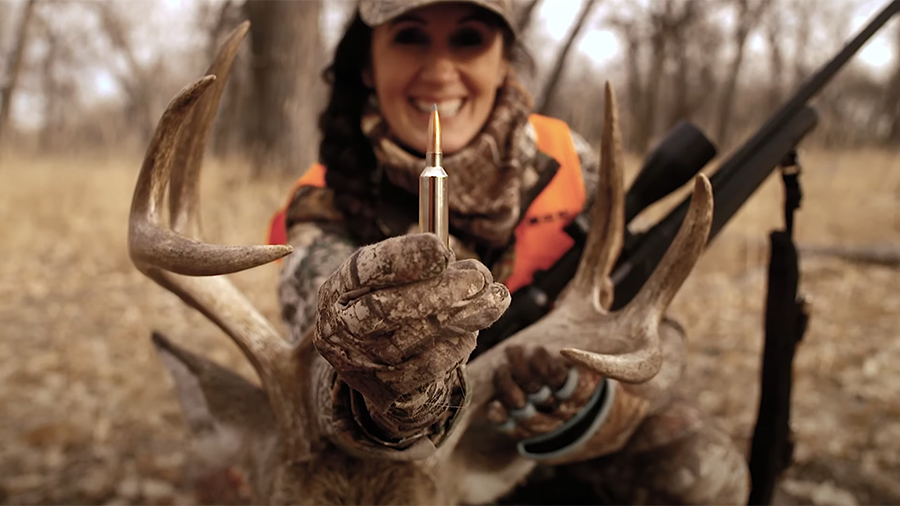Winchester managed to expand its sales by 9.6 percent in the first quarter after more than doubling sales in the year-ago period. Scott Sutton, president and CEO of Olin Corp., Winchester’s parent, said the Russia-Ukraine war should support Winchester’s growth as Russian ammunition faces export restrictions.
“Demand looks long-term good,” said Sutton on an analyst call about Winchester.
He said Russia was the largest importer of ammunition into the U.S., representing about 12 percent of the market. He added, “I suspect the U.S. isn’t long for continuing to import that ammunition. So that’s just one more item that enhances the demand profile looking forward for Winchester.”
Winchester’s sales for the first quarter were $426.7 million, up 9.6 percent compared to $389.2 million in the first quarter of 2021 and ahead 127 percent from $188.0 million in the 2020 first quarter.
Sutton said, “Winchester is already highly engaged in materializing benefits from growth vectors in both the commercial and military arenas. Our Shoot United initiative is exposing the positive benefits of wholesome shooting sports with family and friends to millions of potential new participants in this fast-growing sport.”
Sutton added that Winchester has also recently been awarded a contract to develop the U.S. military’s next-generation squad weapon’s ammunition production facility at its Lake City, MO ammunition plant. Sutton said, “We expect multiple new fundings to be appropriated to Winchester to manage this effort and supply the 6.8-millimeter rounds. Winchester is clearly on our growth path.”
He noted that Winchester delivered the highest quarterly EBITDA in its history from a profitability perspective.
First-quarter 2022 segment earnings for the Winchester segment were $118.9 million compared to $85.1 million in the first quarter of 2021, a gain of 39.7 percent. The $33.8 million increase in segment earnings was due to higher commercial ammunition pricing partially offset by higher commodity and other materials costs. Winchester’s first quarter 2022 results included depreciation and amortization expense of $6.2 million compared to $5.6 million in the first quarter of 2021.
Companywide, sales in the first quarter of 2022 were $2,461.4 million compared to $1,918.8 million in 2021.
Olin also operates two chemical segments. At its Chlor Alkali Products and Vinyl segment, sales grew 43.6 percent to $1,245.2 million compared to $867.0 million in the first quarter of 2021 as higher pricing offset lower volumes. Due to higher pricing, epoxy sales grew 19.2 percent to $789.5 million from $662.6 million a year ago.
First-quarter 2022 reported net income was $393.0 million, or $2.48 per share, compared to $243.6 million, or $1.51, a year ago. First-quarter 2022 adjusted EBITDA of $710.9 million excludes depreciation and amortization expense of $151.7 million and restructuring charges of $3.1 million. First-quarter 2021 adjusted EBITDA was $540.4 million.
Looking to the second quarter, Winchester’s results are expected to be similar to first quarter 2022 levels despite tough comparisons. In the 2021 second quarter, Winchester’s sales slightly more than doubled in the second quarter, to $404.0 million compared to $192.6 million in the second quarter of 2020. Sutton said recently announced price increases for ammunition and primers are expected to offset higher commodity and other materials costs.
In Olin’s other two segments, the two chemicals business segments are expected to continue to see growth despite increased natural gas and electrical power costs. Overall, Olin’s second-quarter 2022 adjusted EBITDA is expected to improve sequentially from the first quarter of 2022.
Photo courtesy Winchester
















